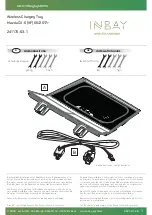
I01�High-voltage�Components
6.�Charging�the�High-voltage�Battery
88
6.1.�General�information�on�charging
6.1.1.�Introduction
The�"charging"�procedure�for�an�electric�vehicle�corresponds�to�"refueling�"�a�conventionally�driven
vehicle.�Accordingly,�in�this�chapter�"charging"�means:
•
Charging�the�high-voltage�battery�in�the�vehicle
•
while�at�standstill�(not�through�brake�energy�regeneration),
•
by�supply�of�electrical�energy,
•
which�is�provided�by�an�AC�voltage�network�outside�the�vehicle
•
and�is�fed�to�the�vehicle�via�a�charging�cable.
As�a�charging�cable�is�used,�one�also�refers�to�conductive�(grid-bound)�charging.�The�inductive
charging�is�not�possible�at�the�I01.�It�is�still�undergoing�research�and�development.
Components�inside�and�outside�the�vehicle�are�required�for�charging.�In�the�vehicle�a�charging�socket
and�power�electronics�are�required�for�the�voltage�conversion.�Outside�the�vehicle�a�device�which
performs�the�protection�and�control�functions�is�needed,�in�addition�to�the�AC�voltage�network�and�a
charging�cable.�This�device�is�called�an�"Electric�Vehicle�Supply�Equipment�(EVSE)"�in�the�standards
and�in�development.�The�following�graphic�shows�the�components�for�the�charging�of�the�high-voltage
battery�inside�and�outside�the�electric�vehicle�and�compares�them�to�the�components�needed�for
refueling�in�a�conventional�vehicle.
Components�for�refueling�the�vehicle�and�charging�the�high-voltage�battery
Index
Refueling�the�vehicle
Charging�the�high-voltage�battery
1
Filling�station
AC�voltage�network
2
Petrol�pump
Electric�Vehicle�Supply�Equipment�(e.g.
wallbox)
3
Fuel�line�between�fuel�pump�nozzle
and�gasoline�pump
Charging�cable
4
Fuel�pump�nozzle
Vehicle�connector�at�charging�cable
















































